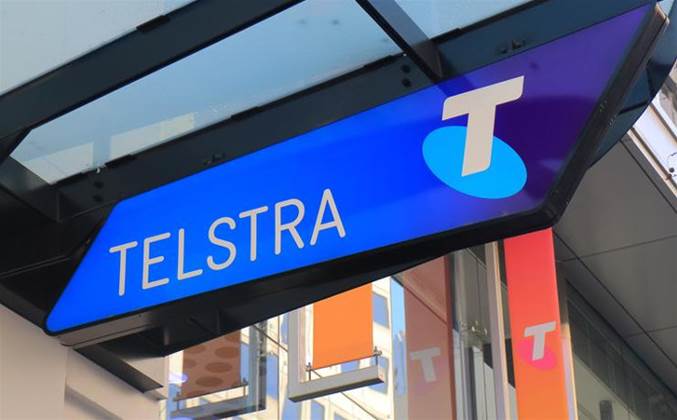Telstra has announced 2022 full year results of $22 billion in income (down 4.7 percent) and net profit of $1.8 billion (down 4.6 percent), with declines largely attributable to the NBN’s impact on its business.

The company's consumer business suffered badly from a loss of bundled customers, with mobile helping to absorb the damage.
The carrier said while it lost 81,000 bundled consumer fixed-line services, it added 155,000 postpaid mobile services, 215,000 retail prepaid services, 218,000 wholesale mobile services, and a million IoT services.
This left the carrier with nearly 21 million retail mobile services, and while mobile broadband services only grew by 0.4 percent, mobile broadband revenue grew by 7 percent to $924 million.
Total mobile revenue grew by 1.7 percent to $9.5 billion, of which $5 billion was in postpaid (up 4.5 percent).
On the other hand, fixed consumer and small business (C&SB) services were “more challenged”, outgoing CEO Andy Penn said.
“Net new retail bundles were negative 87,000, although bundle and standalone data ARPU increased by 2.4 per cent”, he said.
That was reflected in a 5.3 percent decline in C&SB income by 5.3 percent to $4.5 billion, “impacted by nbn migration along with declines in legacy voice and SIOs.”
NBN impacts
The rollout of the NBN continued to damp Telstra’s income, with NBN receipts declining by $700 million and NBN commercial works down $300 million.
Penn said this year, the NBN represented a $340 million EBITDA “headwind”, bringing the cumulative impact of the NBN on Telstra’s EBITDA $3.6 billion per annum, “a large and difficult pill to swallow, but we have swallowed it”.
The NBN is also bringing new customer behaviour, with more people willing to unbundle their telecommunications dollar.
The decline in C&SB bundles contributed to on-network fixed line revenue falling by 40.2 percent to $469 million, while off-net fixed revenue (that is, services Telstra resells such as the NBN) grew 5 percent to just over $3 billion as customers continue to migrate onto the NBN.
Incoming CEO Vicky Brady said the loss of bundled customers reflected customers moving to the NBN.
“We are now in the final stages of the NBN migration, and that does play a part,” Brady said.
Migrating the very last tranche of customers to the NBN, she said, “can be a challenging experience” leading them to abandon bundles.
Finally, although she agreed that Telstra had to address the loss of those services, it was committed to offering premium services with inclusions like the Telstra Smart Modem and mobile backup.
That set Telstra in opposition to lower-cost “naked” bundles without such inclusions.
With the NBN such a challenge, it’s little surprise that Penn welcomed the revision of the NBN Special Access Undertaking process – something the industry hopes will deliver tariff structures more likely to encourage a shift to higher speed, higher ARPU services.
“I also applaud the Government’s recent advice to NBN Co, and NBN Co’s subsequent decision, to withdraw its SAU and work towards a better industry pricing model,” Penn said.
“We look forward to an expedited outcome that improves the quality of service for all customers and a more economically sustainable industry.”
Penn said “ultimately government policy should be set with an aspiration that Australia have a world-leading digital infrastructure.”
About the SAU, he said: “We’ve always had three fundamental points.
“Firstly, The level of wholesale pricing is looking too high, and looking to go higher”, something particularly represented in NBN Co's CVC pricing.
“Secondly, the structure of the pricing – there’s a mismatch between the wholesaler and the retailer.”
Finally, he said, wholesale and retail service levels need better alignment: “As a retailer we have all sorts of different service obligations which are not backed up with the service obligations between NBN and us.”
Digital transformation
The challenges Telstra faces in the consumer market also put a premium on its ongoing investment in simplification and digitisation.
The carrier has attracted 4.5 million customers signed up to its Telstra Plus rewards program, well short of the 5 million target but he was still willing to call the program “an overwhelming success”.
The digital transformation also meant that almost half of all C&SB sales interactions, and more than three quarters of services interactions, happening over digital channels.
That’s driven down the number of calls in the C&SB call centres by 70 percent.
Enterprise shows a similar trajectory, with 40 percent of service interactions through the digital channel, Penn said.
Energy retail on hold
Because of the crisis in Australia’s energy market, one of Telstra’s brand extension strategies has been put on ice – Telstra Energy.
Penn said Telstra had “made significant progress” on the Telstra Energy launch, including obtaining licence approvals and conducting “a limited number of customer trials”.
“However, clearly the retail energy market is currently going through severe dislocation and given this, we will not be scaling in FY23,” he said.
Having received 10,000 expressions of interest, Penn said Telstra intends to expand its trial to those customers, “and keep the market dynamics under review”.
He added: “we will update the market on our plans as the market dynamics become
more certain.”




_(22).jpg&h=140&w=231&c=1&s=0)






 iTnews Executive Retreat - Security Leaders Edition
iTnews Executive Retreat - Security Leaders Edition












_(1).jpg&h=140&w=231&c=1&s=0)



